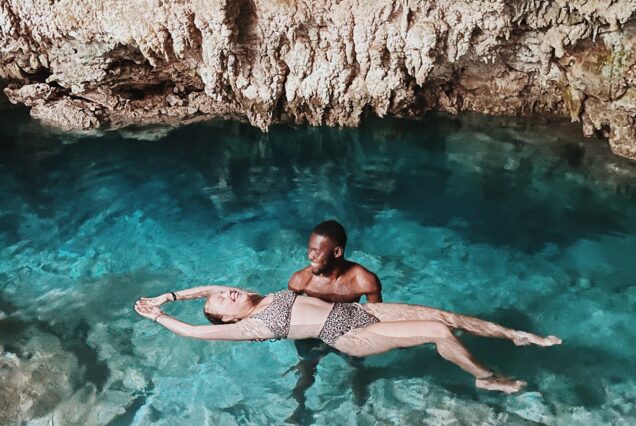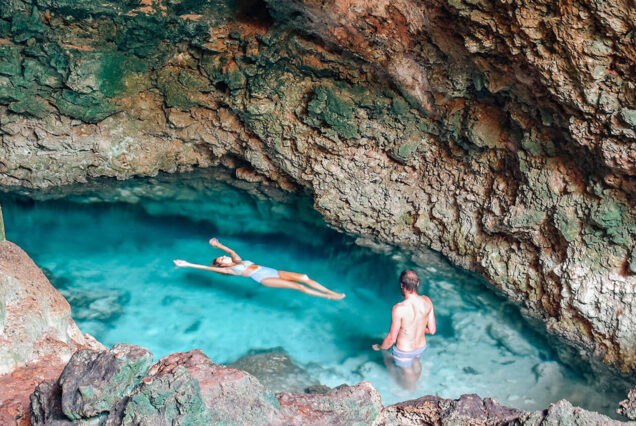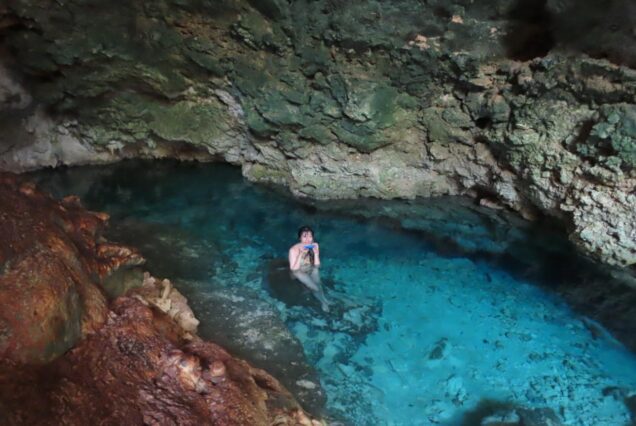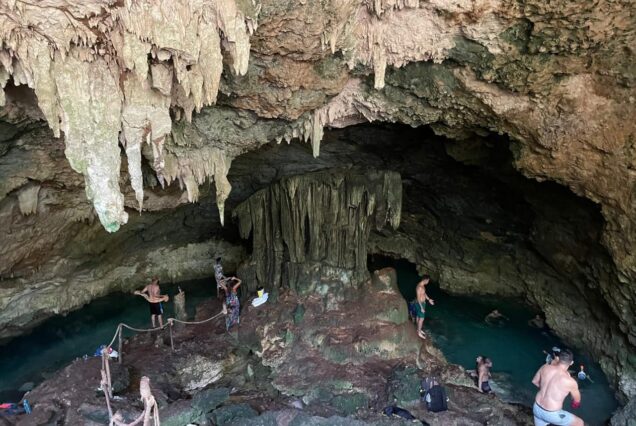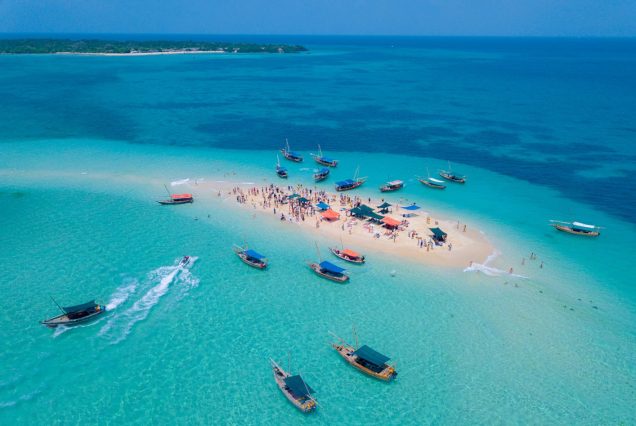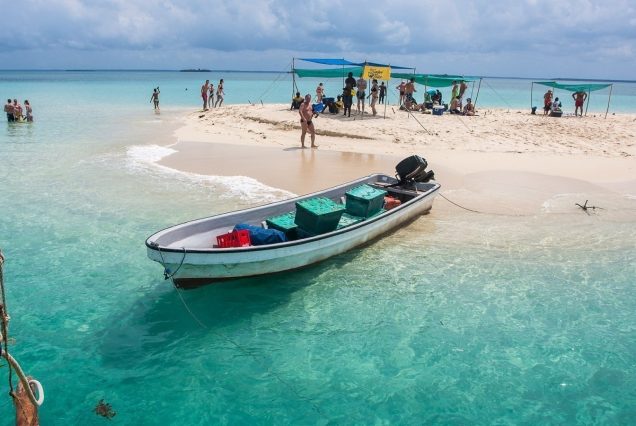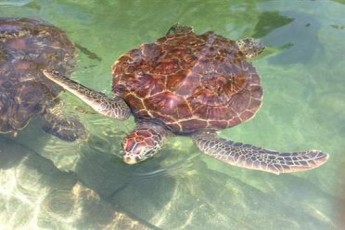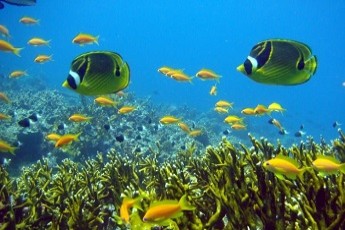
kuza cave jambiani
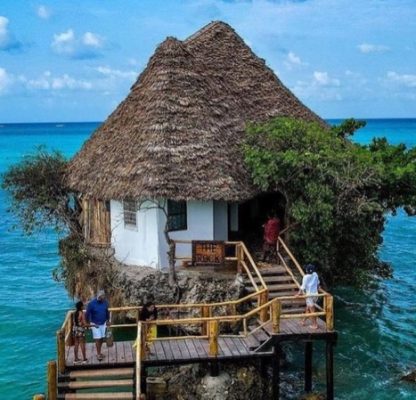
Welcome to Zanzibar Tours! Discover the beauty and culture of Zanzibar Island with our expertly guided tours. From the historic Stone Town to the wildlife of Prison Island and the crystal waters of the Safari Blue Trip, we have something for everyone!Our knowledgeable guides ensure a safe, enjoyable, and immersive experience as you uncover Zanzibar’s vibrant culture and fascinating history.From half-day to full-day trips, our options range from bustling city tours to serene natural escapes, suitable for individuals, families, and small groups.
Overview
Discover Kuza Cave: A Hidden Gem in Jambiani, Zanzibar
Located along the stunning shores of Jambiani on Zanzibar’s southeastern coast, Kuza Cave is a captivating destination that showcases the island’s geological marvels and rich cultural heritage. This limestone cave, adorned with impressive stalactites and stalagmites, provides visitors with a rare opportunity to explore the area’s geological history while engaging with local traditions. As Zanzibar’s tourism industry flourishes, Kuza Cave has become an essential stop for travelers seeking authentic experiences beyond typical beach resorts. In this article, we will explore the geological significance, cultural relevance, ecological importance, and visitor experience at Kuza Cave.
Geological Significance of Kuza Cave
Kuza Cave is a stunning representation of the geological processes that have formed Zanzibar over millions of years. Carved from coral limestone, this cave is the result of erosion and sedimentation, leading to a fascinating network of tunnels and chambers. Its formation dates back to the Pleistocene epoch, shaped by rising sea levels and tectonic shifts.
Inside the cave, visitors can observe magnificent features such as stalactites hanging from the ceiling and stalagmites rising from the ground. These formations are not only visually striking; they also provide valuable insights into historic environmental conditions. By analyzing the mineral composition and growth patterns, geologists can uncover climatic changes and sea level shifts that have occurred over the centuries.
Kuza Cave also serves as a natural laboratory for researchers focused on karst landscapes, which are defined by soluble rocks like limestone. The cave’s distinct characteristics enhance our understanding of karst topography, playing a critical role in groundwater systems and biodiversity in comparable ecosystems worldwide.
Cultural Importance of Kuza Cave
Beyond its geological features, Kuza Cave holds profound cultural significance for the local community. The cave is intertwined with folklore and tradition, often revered as a sacred site by Zanzibar’s indigenous peoples. Local legends speak of spirits inhabiting the cave, believed to safeguard the area and those who reside there. This spiritual connection fosters respect among locals, who often conduct rituals and ceremonies within its walls.
Moreover, Kuza Cave serves as a hub for community involvement and educational opportunities. The nearby village of Jambiani has adopted the cave as a focal point for cultural tourism, enabling visitors to engage with local customs and practices. Guided tours frequently include storytelling sessions, where local guides share the cave’s history and cultural significance, enriching the visitor experience and preserving oral traditions.
Integrating cultural elements into the tourism experience at Kuza Cave not only benefits visitors but also empowers the local economy. The influx of tourists creates income opportunities for local artisans and guides, promoting sustainable development while safeguarding traditional practices.
Ecological Significance of Kuza Cave
Kuza Cave is a geological and cultural treasure, but it is also an ecological sanctuary. The cave’s unique microclimate nurtures a diverse array of flora and fauna, including species endemic to Zanzibar. The humid conditions within the cave are ideal for various bats, insects, and plants that thrive in darkness.
Bats, in particular, play an essential role in maintaining the ecological balance within the cave’s ecosystem. These nocturnal animals contribute to pollination and seed dispersal, crucial for plant reproduction. Their guano, or droppings, serves as a vital nutrient source for other organisms in the cave.
To protect this delicate ecosystem from potential threats posed by tourism and environmental changes, conservation efforts are essential. Local organizations actively monitor the cave’s biodiversity and promote sustainable practices among visitors. By raising awareness about the ecological importance of Kuza Cave, stakeholders aim to ensure that future generations can appreciate its wonders while preserving its natural heritage.
Visitor Experience at Kuza Cave
A visit to Kuza Cave promises an enriching experience that combines adventure and education. The journey begins with a short hike through lush vegetation, offering a glimpse of Zanzibar’s vibrant biodiversity before arriving at the cave entrance. As visitors step inside, they are welcomed by a refreshing breeze and the breathtaking sight of glistening limestone formations illuminated by gentle lighting.
Guided tours led by knowledgeable local guides provide insights into the geological, cultural, and ecological features of Kuza Cave, ensuring a memorable and informative experience for all who visit.
Terms and Conditions: Cancellations
Client Cancellations: To cancel a booked tour or excursion, clients must submit a written request in accordance with our terms and conditions. This written cancellation request is essential for proper acknowledgment. Please be aware that cancellations may incur a percentage deduction from the total tour cost as outlined in our terms and conditions.
Our Cancellations: We reserve the right to cancel a booked tour only under unusual and unpredictable circumstances, as specified in our terms and conditions.
Included/Excluded
- Guiding fee
- Entrance fee
- Conservation fee
- A knowledgeable and friendly professional guide
- All government fees and taxes
- transfer from hotel and return on extra cost
Tour Plan
Embarking on a half day tour to Kuza Cave, nestled on the enchanting island of Zanzibar, offers an unparalleled opportunity to explore the geological and cultural wonders of this stunning region. Famous for its breathtaking stalactites and stalagmites, Kuza Cave attracts tourists from around the world. Understanding the best time to embark on your tour can significantly enhance your experience. This guide highlights key factors that influence the ideal timing for your half day tour to Kuza Cave, including weather conditions, local events, and personal preferences.
Zanzibar features a tropical climate with two primary seasons: the dry season and the rainy season. The dry season, spanning from June to October, is characterized by lower humidity and delightful temperatures, making it the perfect time for outdoor activities, including a half day tour to Kuza Cave. During these months, temperatures typically range from 25°C to 30°C (77°F to 86°F), providing an excellent environment for exploration.
In contrast, the rainy season lasts from March to May and November to December. While rain can be heavy at times, it often arrives in brief bursts, allowing for sightseeing opportunities. However, the increased humidity and muddy paths during this season may impact your overall experience at Kuza Cave. Therefore, if you prefer optimal weather conditions, planning your half day tour during the dry season is advisable.
The peak tourist season in Zanzibar aligns with the dry months, particularly from July to September. During this time, Kuza Cave experiences a significant influx of visitors, which can result in crowded tours and longer wait times. While some travelers enjoy the lively atmosphere, others may prefer a peaceful experience. For a quieter encounter with the cave's stunning natural beauty, consider scheduling your half day tour to Kuza Cave during the shoulder months of June or October. These periods often strike a balance between favorable weather and fewer crowds, ensuring a more personalized tour experience.
It's also crucial to consider local holidays and events, as they can influence visitor numbers. The Zanzibar International Film Festival, held in July, attracts a large number of tourists. If you're interested in immersing yourself in local culture alongside your cave tour, timing your visit with such events can enhance your experience. Just be prepared for larger crowds during these busy periods.
Zanzibar is not only celebrated for its stunning beaches but also for its rich cultural heritage and diverse natural attractions. When planning your half day tour to Kuza Cave, think about incorporating other local sites into your itinerary. The nearby Jozani Forest Reserve, home to the endemic Red Colobus monkey, provides a unique opportunity for nature enthusiasts to explore Zanzibar's lush ecosystems. Visiting these sites can offer a deeper understanding of the island’s biodiversity and cultural significance.
Furthermore, engaging with local communities through guided tours or workshops can enrich your experience. Many tour operators provide packages that combine visits to Kuza Cave with cultural activities, such as traditional cooking classes or artisan workshops. Opting for these combined experiences can enhance your understanding of Zanzibar's heritage while enjoying the natural beauty of Kuza Cave.
You May Like
Safari blue trip
Sea Turtles Zanzibar
Mnemba Atoll trip
Zanzibar Village Tour

A Zanzibar Tours and Excursion Company providing Day Tour and Holiday Tour packages at affordable cost.
Contact Info
- P O Box 61, Stone Town Zanzibar, Tanzania
- Copyright ©2024 All Rights Reserved By zanzibar-tours.co.tz
